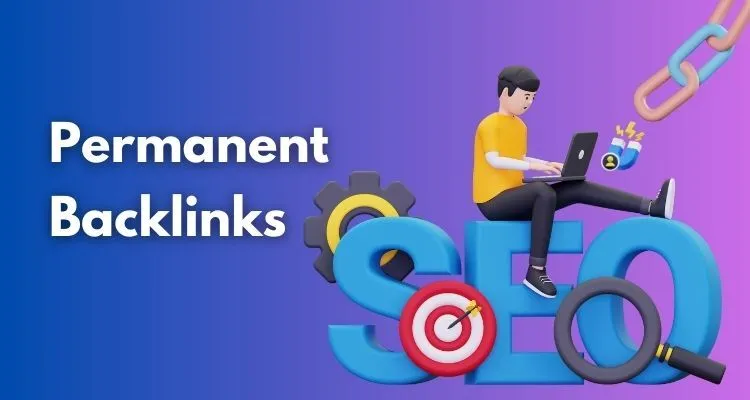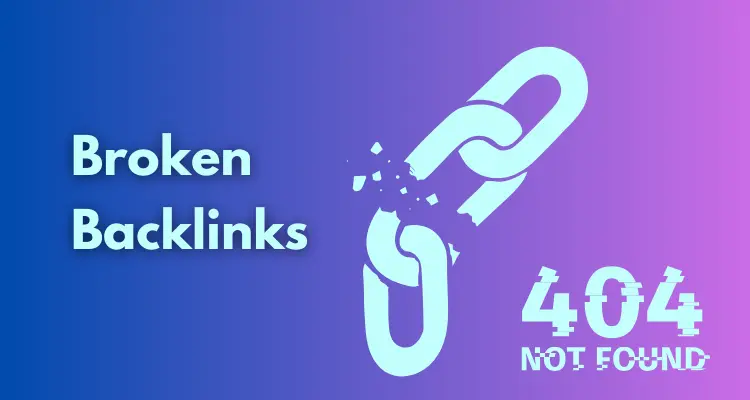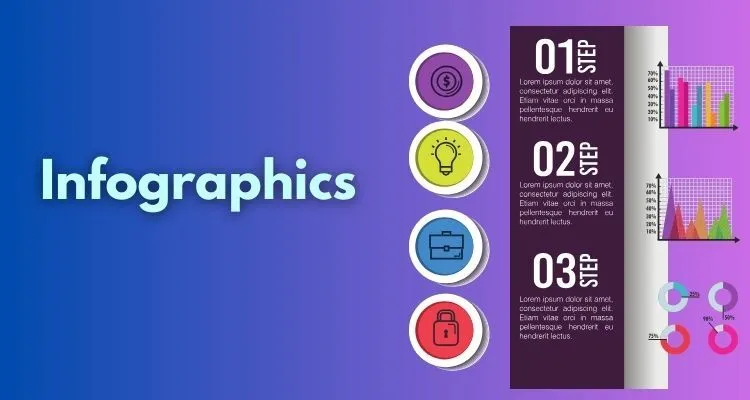- Home
- -Blog
Permanent Backlinks: 10 High-Impact Techniques to Boost Your SEO

- 16 July 2024
- Shabir Ahmad
Permanent Backlinks: 10 High-Impact Techniques
- Create High-Quality Content
- Guest Posting
- Broken Link Building
- Infographics
- Resource Pages
- Testimonials and Reviews
- Skyscraper Technique
- Niche Forums and Communities
- Press Releases
Brief Explanation of What Permanent Backlinks Are
Permanent backlinks are hyperlinks from one website to another that remain active indefinitely. These links serve as endorsements, signaling to search engines that the linked content is valuable and credible. This boosts the authority and ranking of the linked site, providing ongoing SEO benefits and driving consistent organic traffic.
Permanent backlinks are links from other websites to your site that remain active and unchanged over time. Unlike temporary links which may be removed after a certain period permanent backlinks provide a lasting connection to your content. These backlinks act as endorsements from other websites signaling to search engines that your content is valuable and trustworthy.
Importance of Permanent Backlinks for SEO
Permanent backlinks play a crucial role in SEO. They help improve your website's authority and ranking on search engines like Google. When reputable websites link to your content with contextual links, it sends a strong signal to search engines about the quality and relevance of your site. This can lead to higher search rankings increased organic traffic and greater visibility for your business. A professional SaaS link building agency can help you acquire these high-quality contextual backlinks in a scalable and strategic way.
According to a study by Ahrefs 91% of all web pages never get any organic traffic from Google primarily due to the lack of backlinks. Furthermore research from Moz shows that link signals including the quantity and quality of backlinks are one of the top factors in Google's ranking algorithm.
Backlinks are widely considered a significant ranking factor in SEO. While Google does not publicly disclose the exact weight of backlinks in its algorithm, extensive research and expert consensus support the importance of link signals in search engine rankings.For more advanced strategies, consider how niche edits and using a backlink marketplace can skyrocket your website ranking.
How to Obtain Permanent Backlinks: Effective Techniques
1. Create High-Quality Content

Importance of Valuable Content
Creating valuable content is the cornerstone of a successful SEO strategy. Quality content not only engages your audience but also earns the trust and respect of other websites which is essential for acquiring backlinks.
Search engines like Google prioritize content that provides genuine value to users. When your content is informative well-researched and relevant it naturally attracts more visitors and earns backlinks from other websites looking to share valuable resources with their readers.
Examples of High-Quality Content Types
- Guides: Comprehensive guides that cover a topic in detail are highly valuable.
- Tutorials: Step-by-step tutorials help users understand and implement complex processes.
- Research: Original research including case studies surveys and statistical analyses is highly linkable.
How Quality Content Attracts Natural Backlinks
Quality content attracts natural backlinks in several ways:
- Authority and Trust: When your content provides accurate reliable information it establishes your site as an authority in your niche. Other websites are more likely to link to your content as a credible source.
- Engagement: High-quality content engages readers encouraging them to share it on social media and other platforms. This increased visibility can lead to more backlinks.
- Resource Value: Content that serves as a valuable resource such as detailed guides and tutorials is often linked to by other websites that want to offer their readers useful information.
- SEO Benefits: Well-crafted content that includes relevant keywords and is optimized for search engines will rank higher making it more likely to be discovered and linked to by other sites.
2. Guest Posting
Definition and Benefits of Guest Posting
Guest posting involves writing articles for other blogs in your industry or niche. This strategy allows you to reach a broader audience share your expertise and build relationships with other bloggers. The primary benefits of guest posting include:
- Increased Exposure: Publishing on other sites helps you reach a new audience that may not be familiar with your content.
- Improved Authority: Contributing valuable content to reputable blogs can establish you as an authority in your field.
- High-Quality Backlinks: Guest posts often include backlinks to your site which can boost your SEO and drive organic traffic.
- Networking Opportunities: Building relationships with other bloggers can lead to future collaborations and more guest posting opportunities.
How to Find Suitable Blogs for Guest Posts
- Industry Relevance: Look for blogs that are relevant to your niche. Use search queries like "your niche + write for us" or "your niche + guest post guidelines" to find opportunities.
- Audience Engagement: Choose blogs with an engaged audience. Check the comments section and social media shares to gauge engagement.
- Domain Authority: Use tools like Ahrefs or Moz to check the domain authority of potential blogs. Higher domain authority means more valuable backlinks.
- Content Quality: Ensure the blog maintains high content standards and aligns with your writing style and values.
Tips for Writing Effective Guest Posts
- Understand the Audience: Tailor your content to the blog's audience. Read existing posts to understand what resonates with them.
- Follow Guidelines: Adhere to the blog's guest posting guidelines regarding content length format and submission process.
- Provide Value: Write informative engaging and unique content. Offer insights tips and actionable advice that the audience can benefit from.
- Include Relevant Links: Naturally incorporate a few relevant links to your website. Ensure these links add value to the content and are not overly promotional.
- Engage with Readers: Respond to comments and interact with readers after your post is published. This can enhance your credibility and encourage further engagement.
3. Broken Link Building

Explanation of Broken Link Building
Broken link building is an SEO strategy where you identify broken links on other websites and suggest your content as a replacement. This helps webmasters fix their broken links while earning you valuable backlinks. It's a win-win situation: they improve their site's user experience and you gain a backlink.
Steps to Find Broken Links on Other Websites
- Identify Target Websites: Start by identifying websites in your niche with good domain authority. These are your potential targets for broken link building.
- Use SEO Tools: Utilize tools like Ahrefs SEMrush or Screaming Frog to crawl these websites and find broken links. These tools can scan a site and list all the broken links (404 errors) it finds.
- Analyze Broken Links: Once you have a list of broken links analyze them to see if any are relevant to your content. Focus on links that point to pages similar to the content you have or can create.
How to Approach Webmasters to Replace Broken Links with Your Content
- Create or Update Content: Ensure you have high-quality content that matches the topic of the broken link. If you don't have relevant content create it or update existing content to make it more comprehensive.
- Track Your Progress: Keep track of your outreach efforts and responses. Use a spreadsheet or a CRM tool to monitor which webmasters have responded and updated their links.
Craft a Polite Outreach Email: Write a friendly and concise email to the webmaster. Mention the broken link and suggest your content as a replacement. Be sure to highlight how your content provides value and aligns with their audience.
Follow Up: If you don't receive a response within a week or two send a polite follow-up email. Sometimes webmasters are busy and a gentle reminder can help.
By following these steps you can effectively use broken link building to earn high-quality permanent backlinks for your website.
4. Infographics

Why Infographics Are Effective
Infographics are visual representations of information data or knowledge. They are effective for several reasons:
- Easy to Understand: Infographics simplify complex information making it easier for people to understand and retain. This is particularly useful for data-heavy topics.
- Highly Shareable: Visual content is more likely to be shared on social media and other platforms. Infographics can quickly go viral increasing their reach.
- Engagement: Infographics attract more attention and engagement than text alone. People are naturally drawn to visually appealing content.
- SEO Benefits: When infographics are shared and linked back to they generate valuable backlinks improving your site's SEO.
Tips for Creating Engaging Infographics
- Focus on a Single Topic: Keep your infographic focused on one main idea or topic to avoid overwhelming your audience.
- Use Reliable Data: Ensure all data presented is accurate and sourced from reputable places. This builds credibility and trust.
- Keep It Simple: Avoid cluttering your infographic with too much information. Use clear concise text and visuals.
- Visually Appealing Design: Use a consistent color scheme readable fonts and balanced layouts. Tools like Canva or Piktochart can help you create professional designs.
- Tell a Story: Structure your infographic to tell a story. This helps guide the viewer through the information in a logical way.
- Include Your Branding: Add your logo and website URL to your infographic so people know where it originated even if it's shared widely.
How to Promote Infographics to Get Backlinks
- Share on Social Media: Post your infographic on all your social media channels. Encourage your followers to share it as well.
- Submit to Infographic Directories: There are many websites dedicated to hosting infographics. Submitting your infographic to these directories can increase its visibility.
- Reach Out to Influencers: Contact influencers in your niche and ask them to share your infographic. Personalize your outreach to increase the chances of a positive response.
- Embed Code: Provide an embed code on your website so others can easily share your infographic while giving you a backlink.
- Blog Posts: Write a blog post that includes your infographic and share it with your audience. Promote the blog post through email marketing and social media.
- Guest Posts: Offer your infographic as a resource in your guest posts on other websites. This can earn you backlinks from high-authority sites.
- Email Outreach: Send personalized emails to websites and blogs that might find your infographic useful. Explain why it would be valuable to their audience and include a link to your infographic.
5. Resource Pages
What Are Resource Pages?
Resource pages are curated lists of links to high-quality content on a specific topic. These pages are designed to provide users with valuable resources and are often created by websites to offer comprehensive information on a particular subject. For example a resource page on SEO might include links to guides tools blogs and case studies related to search engine optimization.
Finding Resource Pages in Your Niche
- Use Search Engines: Perform targeted searches using queries like "your niche + resources" "best [niche] resources" or "top [niche] blogs and resources." This can help you find existing resource pages that are relevant to your content.
- Analyze Competitors: Check the websites of your competitors to see if they have resource pages. This can give you ideas on where to find resource pages and what kind of content is listed.
- Utilize SEO Tools: Tools like Ahrefs Moz and SEMrush can help you find resource pages by analyzing backlinks and popular content in your niche. Look for pages that have a high number of backlinks as these are often resource pages.
6. Testimonials and Reviews
How Writing Testimonials Can Get You Backlinks
Writing testimonials and reviews for products or services you have used can be an effective way to gain backlinks. Many businesses feature customer testimonials on their websites often including a link back to the customer's website. This not only provides a valuable backlink but also boosts your credibility and visibility.
7. Skyscraper Technique
Explanation of the Skyscraper Technique
The skyscraper technique involves finding popular content in your niche creating a superior version of it and then reaching out to websites that linked to the original content to link to your improved version. This method helps you build high-quality backlinks by offering enhanced value.
Steps to Implement the Skyscraper Technique
- Identify Popular Content: Use tools like Ahrefs SEMrush or BuzzSumo to find high-performing content in your niche.
- Create Better Content: Improve on the original content by adding more detail updating information enhancing visuals or providing additional insights.
- Reach Out for Backlinks: Contact websites that linked to the original content. Let them know about your improved version and suggest they link to your content instead.
8. Niche Forums and Communities
Participating in Niche Forums and Communities
Joining niche forums and communities allows you to share your expertise and build relationships. By contributing valuable insights you can naturally link back to your site where relevant.
Providing Valuable Contributions and Linking Back to Your Site
- Answer Questions: Provide detailed answers to questions related to your expertise. Include a link to relevant content on your site when appropriate.
- Share Resources: Offer useful resources and tools. Make sure your contributions are genuinely helpful to the community.
Examples of Popular Forums and Communities in Various Niches
- SEO and Marketing: Moz Community Warrior Forum
- Technology: Stack Overflow TechRepublic
- Travel: TripAdvisor Forums Lonely Planet's Thorn Tree
9. Press Releases

Writing Effective Press Releases
A well-crafted press release can attract media attention and generate backlinks. Focus on creating newsworthy content with a clear concise message.
Distribution Channels for Press Releases
- Press Release Distribution Services: Use services like PR Newswire Business Wire or PRWeb to distribute your press release widely.
- Industry-Specific Outlets: Target media outlets and blogs that cover your industry. Personalized outreach can be more effective.
How Press Releases Can Lead to Permanent Backlinks
When your press release is picked up by news outlets blogs and other websites it often includes a link back to your site. This can provide high-authority backlinks and boost your SEO.
Conclusion
Building permanent backlinks is crucial for enhancing your website's SEO and driving organic traffic. By implementing the strategies discussed—creating high-quality content guest posting broken link building using infographics getting listed on resource pages writing testimonials and reviews utilizing the skyscraper technique leveraging social media participating in niche forums and issuing press releases—you can effectively strengthen your backlink profile.
Each technique has its unique advantages and can complement your overall SEO strategy. High-quality content attracts natural backlinks guest posts expand your reach and infographics engage audiences visually. Resource pages and testimonials offer direct backlink opportunities while the skyscraper technique allows you to improve upon existing content. Social media and niche forums help in building relationships and increasing your content's visibility and press releases can generate authoritative backlinks.
By consistently applying these methods you will not only improve your website's authority and rankings but also create a sustainable foundation for long-term SEO success.
FAQs
What Are the Three Types of Backlinks?



